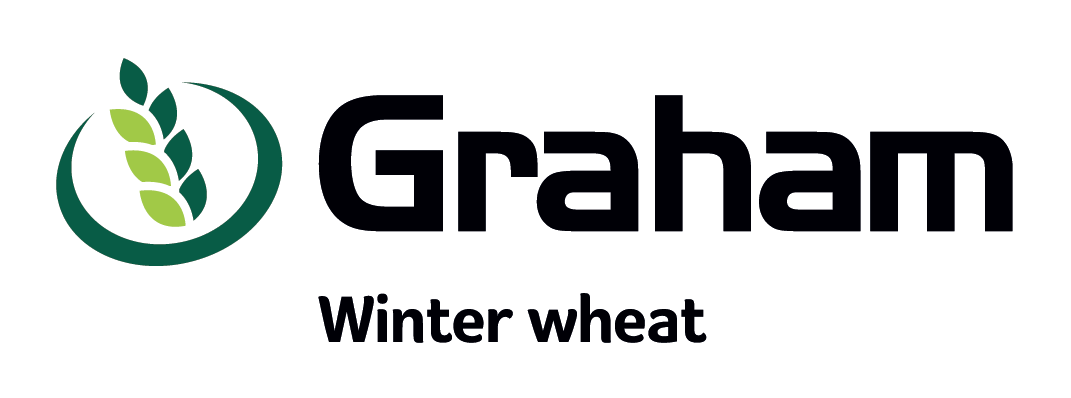Graham Feed Wheat

- Average yielding winter feed wheat
- Has a wide sowing window from early April until mid June
- Good disease resistance profile but responds well to fungicides
- Heavy grain and high test weights, plus low sprouting risk
Description
GRAHAM winter wheat is an average yielding feed wheat cultivar bred by Syngenta in France and developed in New Zealand in conjunction with Cropmark Seeds Ltd as head licensee and PGG Wrightson Grain (PGW Grain). In the past four seasons in FAR Cultivar Performance Trial (CPT), GRAHAM has produced consistent yields across all environments. It has a good disease package and produces an intermediate hard/soft grain with high kernel weights, good test weights and high falling numbers.
CPT GRAHAM Autumn grain quality (4 year mean) |
Canterbury |
Southland |
Lower North Island |
|---|---|---|---|
| Kernel weight (1000 seed weight) | 49 | 49 | 45 |
| Test Weight (kg/hl) | 74 | 73 | 71 |
| Protein content (%) (N% x 5.7) | 10 | 9 | 11 |
| Screenings (%) | 0.7 | 1.0 | 1.6 |
| Falling number (sec) | 323 | 314 | 316 |
TIME OF DRILLING
SPEED OF DEVELOPMENT
Month planted |
Typical heading dates for GRAHAM in Canterbury |
| Late March | Early November |
| Late May | Mid-Late November |
| Late June | Early-Mid December |
From autumn plantings, GRAHAM is an early-medium maturing cultivar. However, it should not be planted after the end of June in areas with mild winters as its high vernalisation requirement may result in excessively delayed heading.
SEED RATE AND TILLERING CHARACTERISTICS
GRAHAM has a high tillering capacity and a broad U-shaped tillering habit making it excellent at compensating for poor establishment and suited to lighter seeding rates, especially from earlier plantings. Target plant populations should be at the low to medium end of the range for autumn cereals.
SOIL TYPE, ROTATION AND GEOGRAPHY
DISEASE RESISTANCE
GRAHAM has good resistance to most cereal diseases in New Zealand, especially stripe rust and Fusarium head blight but monitor for tan spot and leaf rust. Considering this disease profile and previous work conducted by Cropmark Seeds Ltd, a moderate to high fungicide programme is recommended. In the 2019-2025 PGW Grain fungicide trials, GRAHAM has produced one of the lowest untreated yields and high fungicide responses of 2.7-6.2 t/ha. Please contact your local PGW Representative for site specific recommendations.
Disease resistance results:
Disease |
PGW Grain disease nursery ratings
|
|---|---|
| Stripe rust | 9 |
| Leaf rust | 5 |
| Septoria leaf blotch | 6 |
| Powdery mildew | 7 |
| Fusarium head blight | 7 |


